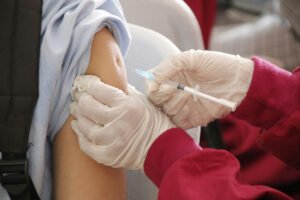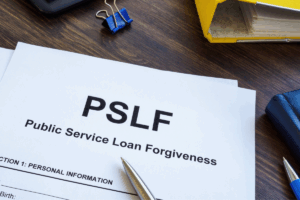
We here at NPQ are pretty darned sure that the fourteenth set of Interim Final Rules for the Paycheck Protection Program (PPP)—issued last Friday by the Small Business Administration (SBA) and Treasury Department as a dense, 18-page Memorial Day gift to financial advisors and managers—is no more final than the prior thirteen sets of Interim Final Rules, which weighed in at 26 pages. The word “final” apparently means little in this context, so it seems the best thing you can do if you have received a PPP loan and are looking to see if some or all of it can be forgiven is to stay abreast of any and all changes made between now and whatever Congress and the Small Business Administration decide is the closing date for spending out the loan. (Apparently, that too is still in play.)
Congress has heard loud and clear from the public that the process’s management and rules are both confusing and too restrictive. We want to be sure that you have the most useful and accurate information, as quickly as possible. There are two places you can go. The first is FMA, which is sending out regular, rapid updates and has put together a set of tools to aid management of these loans. The other is the National Council of Nonprofits, which has been working not only to make sense of the rules, but to help change them where necessary.
FMA has weighed in with a summary of the most recent Final Interim Rules, which clarifies that “some organizations based on the timing of their loan and payroll and bill cycles…will end up being allowed to include more than 8 weeks of expenses.” Meanwhile, the Council’s Tim Delaney informs us that while there has been no real movement on the next round of stimulus funding after the Senate refused to take up the House’s $3 trillion bill, the House is expected this week to take up a bipartisan measure (H.R. 6886) called the Paycheck Protection Program Flexibility Act of 2020. Filed on May 11th, it’s designed, as its name suggests, to address problems with the PPP by improving the terms to make loan funds more useful, more flexible, and potentially forgivable. That bill, as described in this press release, will “accomplish some significant changes to the loan terms,” including:
- Forgiveness for expenses beyond the 8-week covered period. The 8-week timeline does not work for local businesses that are prohibited from opening their doors, or those that will only be allowed to open with restrictions. Businesses need the flexibility to spread the loan proceeds over the full course of the crisis until demand returns. Otherwise, employees will simply be furloughed at the expiration of the eight weeks. We want employers to be able to keep their employees on the payroll, not furlough them without pay or terminate them entirely.
- Elimination of restrictions limiting non-payroll expenses to 25 percent of loan proceeds. In order to survive, businesses must pay fixed costs. Earlier administrative rules—but not Congress—said the PPP loans require that 75 percent of the loan go to payroll. For many businesses, payroll simply does not represent 75 percent of their monthly expenses and 25 percent does not leave enough to cover mortgage, rent, and utilities. Retaining employees is not possible if a business cannot retain their physical location
- Elimination of restrictions that limit loan terms to 2 years. While not needed for those getting full forgiveness, this provision could be critical for those who don’t. According to the American Hotel and Lodging Association, full recovery for that industry following both the September 11, 2001 terrorist attacks and the 2008 recession took more than two full years. This is the same for many other industries. If the past is any indication of the future, it will take many businesses more than two years to achieve sufficient revenue to pay back the loan.
- Full access to payroll tax deferment for businesses that take PPP loans. The purpose of PPP and the payroll tax deferment was to provide businesses with capital to weather the crisis. Receiving both should not be considered double-dipping. Businesses need access to both sources of cash flow to survive.
- Extending the rehiring deadline to offset the effect of enhanced Unemployment Insurance. To receive loan forgiveness under PPP, a business must rehire employees by a deadline of June 30, 2020. However, the enhanced Unemployment Insurance created through the CARES Act is higher than the median wage in 44 states. Many businesses have reported an inability to rehire employees because they are making more on Unemployment than they made working. To mitigate this unintended consequence, the deadline to rehire employees under PPP should be extended to align with the expiration of enhanced Unemployment Insurance.
It’s easy to lose the thread of what is happening in the mix. Part of the challenge with the design of the PPP was that it sought to achieve two, often contradictory, purposes at once: preserve employment, and preserve nonprofits and for-profit businesses. These changes basically go in the direction of abandoning employment preservation in favor of keeping nonprofits and businesses as organizations alive, and we greatly appreciate the efforts to preserve our nation’s nonprofits and small businesses.
Sign up for our free newsletters
Subscribe to NPQ's newsletters to have our top stories delivered directly to your inbox.
By signing up, you agree to our privacy policy and terms of use, and to receive messages from NPQ and our partners.
That said, with 38 million having filed for unemployment insurance in the past nine weeks, that means the nation basically lacks an employment strategy. Our strategy, such as it is, is to boost the amount of unemployment insurance payments. As NPQ has noted before, there are remedies to this issue, such as having the government pay businesses to keep employees on payroll directly, as many other nations have. In Germany, this has so far limited the increase in the country’s unemployment rate to 5.8 percent. Both Representative Pramila Jayapal (D-WA) and Senator Josh Hawley (R-MO) have submitted proposals, which have languished in Congress, that have a similar approach. Politico earlier this month estimated the cost at $650 billion—a large number, but no more than what has been spent on PPP.
For additional context, it might be worth noting that Japan, with an economy one-fourth the size of the US economy, just approved its second trillion-dollar coronavirus relief economic package.
Yesterday, Mitch McConnell finally admitted there may be reason to consider another stimulus bill after dragging his feet for the last 11 days. He suggested it might take another few weeks to consider the necessity, even as the death toll nears 100,000, the unemployment rate soars to the highest level in almost a century, and states and other localities find themselves dealing with vastly reduced budgets in times of need. We wish we could believe he is simply considering all the facts judiciously.











